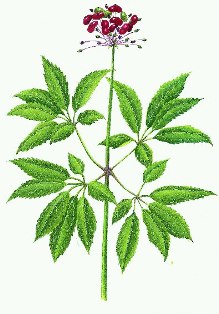Drought in Southwest China Affects the Supply and Price of Medicinal Herbs
Drought in Southwest China Affects the Supply and Price of Medicinal Herbs
Yunnan, Guizhou, Sichuan, Qingzang and Gansu provinces in southwest China are the main production areas of Chinese medicinal herbs. Since the second half of last year, there has been a serious drought. The severe climate change greatly lowers the amount of herb production, and the prices in the herb markets rise continuously . The well-known TCM Doctor Bu-tao Zhang suggests that practitioners can use other medicinal herbs of the same family in order to avoid the pressure of rising prices.
The severe drought also caused the surging prices of staple grains, including Coix (Yi Yi Ren), Black Soybean (Hei Dou) and Green Bean (Lu Dou). For Chinese medicinal herbs, the price has been raising higher and higher after the Chinese New Year. Notoginseng (San Qi, Chuan Qi), Safflower (Hong Hua), Lycium Fruit (Gou Qi Zi), and Jujube (Da Zao) have a large increase in price. Among them, the price-hike of Notoginseng (San Qi, Chuan Qi) is the highest one.

Dr. Bu-tao Zhang said, Notoginseng (San Qi, Chuan Qi), also called pseudoginseng root (Tian Qi), is the main ingredient in “Yunnan Bai Yao”. It virtually makes Yunnan a famous place and also earns great economic benefits. Notoginseng (San Qi, Chuan Qi) is traditionally used to activate blood and resolve blood stasis, reduce inflammation and relieve pain. It is the essential drug used in Chinese Traumatology. In addition, Notoginseng (San Qi, Chuan Qi) is also commonly used in the formulas to support youngster's bone development.
Safflower (Hong Hua, Carthamus tinctorius L.), which belongs to the Asteraceae family, is commonly used to activate blood, regulate menses, resolve blood stasis, and relieve pain. Safflower (Zang Hong Hua, Crocus sativus L.) of Iridaceae family has similar effects, but is of higher price. Recently, due to reduced production in China and the increased cost of human labor, the price of safflower also raises continuously.
Most of the Chinese medicinal herbs are imported from China. The prices of the herbs will not return to normal until the drought is over and the amount of herb production recovers.